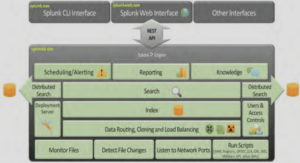The Impact of the Industrial Revolution on the Working Class:
One of the important events in British history is the Industrial Revolution that covers roughly the period between 1760 and 1850. It transformed the country from being largely an agricultural nation, depending on manual labour, into an industrial one through machine-based manufacturing.1 The change was the result of the technological advances and the development of the steam-powered machinery that led eventually to vast changes in different fields such as agriculture, transport and mining. Its impact on society was considerable.2 During this era, different industries were developed besides other new ones which were brought into existence. Thus, life for the mass of the people became easier. However, this was not the case for the whole population in Britain. Although, the Industrial Revolution carried many advantages, its changes had some bad impacts on other sections of the society, mainly the workers for whom life became a hard struggle. New factories were set up, and provided a source of employment for ordinary people who were willing to work there. Nevertheless, the miserable working conditions and the long hours of work with low wages and irregular payment characterized the effects of the Industrial Revolution.
One main social effect of the Industrial Revolution was the new phenomenon of child labour. Children were forced to work in the coal mines and textile factories for 12-16 hours per day for their work was exceptionally valuable to factory owners.3 Women also were sent out to work, because they represented cheap labour force for many employers. Accidents in factories with children and female workers were regular. As a result, the working class often associated the Industrial Revolution with poverty and misery. Indeed, with the development of industrialization the new conditions brought new ideas and witnessed great changes in the political climate. Under the doctrine of laissez-faire, which became prevalent in the late eighteenth century, employers and industrialists were allowed freedom in controlling their workers without restrictions. The exploitation of workers was usually most intensive in the smaller factories where the owners were more haunted by the desire to accumulate capital.4 Under the capitalist system employment and wages were also controlled by the law of supply and demand.
This aggravated the situation of the workers as their working and living conditions became worse. Therefore, the only way for the workers to defend their rights and protect their interests against the employers was by uniting together and forming trade unions. The latter were organizations of wage earners of any activity that were set up to undertake collective bargaining with employers to improve the working conditions and rates of pay of their members. These combinations were opposed by employers who regarded them as attacks on property and threats to their position. This hostility on the part of the employers presented a great obstacle in the development of trade unionism. The British government at that time supported the employers because ministers in most cases knew little about the lives and feelings of workers, and the government’s only answer for unemployment and poverty was the workhouse.1 It had also regarded the trade unions with increasing alarm and opposed their formation for it feared that they would become centres of political agitation. Hence, the 1799 and 1800 Combination Acts were passed to outlaw trade unionism in Britain.
Under these laws, workmen could be imprisoned for joining together to claim for improving working conditions or wages. The ban lasted till the first quarter of the nineteenth century, and any attempt by the workers to demand better status was punishable. Meanwhile, the changes of the Industrial Revolution and the restrictions imposed by the government put many pressures on the working class people. These pressures, besides the fact that workers were not allowed to have access to Parliament to help advance their interests, had pushed the workers to react in different ways. Some workers resorted to violence and machine breaking through organizing underground movements. The worst of these outbursts was Luddism, which took place in 1811 in the Midlands and the North. Workers began to revolt when employers started to cut wages and increase frame rents as food prices went up. They broke into factories and destroyed machines and mills. However, the government, which declared frame-breaking as a capital offence, intervened to end this revolt by arrest and military action in 1812. Other workers found riots and strikes as another way to protest against their conditions. An example of that is the Peterloo Massacre of 1819. In an attempt to disperse a public meeting gathering to demand better working conditions and universal suffrage, the army killed eleven of the demonstrators and the event became known by this name.2 Unrest continued and workers continued to express their discontent in other sectors of Britain. Such riots and uprising provided the background for political action and paved the way for the members of the working class to press their demands for reforms.
The Rise of Working Class Political Consciousness:
As the industrialization of Britain extended, its national wealth increased. In spite of this, the years following 1815 proved to be more difficult for the workers and their poor social conditions went largely ignored by the ruling class. The working class people were still regarded as merely means of production and not as individuals with rights and claims. As a result, political consciousness rose among the working class and this period was a period of political unrest in the industrial areas. Until 1832, workers and new middle classmen had been excluded from Parliament. This was an obstacle which prevented the workers from reforming their social conditions in Britain. For a long time, getting representation in British Parliament was limited to people who owned property worth forty shillings.1 Moreover, the Tories who had been governing the country since 1815 were totally opposed to any reform of Parliament. However, unemployment and discontent on the part of middle class and working class reformers, stemming from the economic depression of 1829 and fearing that this would lead to revolutionary outbreaks, forced the Tories who had initially opposed the reform to give way. In 1832, the middle class got the vote, but no vote was granted to the working class. The 1832 Reform Act did not satisfy the working class radicals. Workingmen, whose support had helped to compel Parliament into passing the Act, were ignored. Consequently, they turned to politics to further the cause of parliamentary reform in order to solve their problems. One of the political movements that rose at that time was the Chartist movement. It was the first large scale organised working class movement that called for political equality and social justice. Its demands were enumerated in a Charter written in 1838 by William Lovett. The latter was the secretary of the London Working Men’s Association that was formed in 1836 with the aim of improving the economic conditions of the workers especially after the run of bad harvests. At a national convention of workingmen’s organizations in August 1838, the Chartists agreed to adopt the Charter as its official paper. “Annual Parliaments, the vote for all men, equal electoral districts, removal of the property qualification for MPs, the secret ballot and payment of MPs” were the points included in the Chartist programme that generally called for changes in the parliamentary system.2 Although it was not a revolutionary movement,
Chartism was a popular one among the working classes particularly in Northern England where the worst evils of industrialization occurred. Different groups of workers were engaged in this movement representing different interests. Improving the working conditions was the main concern of the factory workers. Handloom weavers, however, were struggling to overcome unemployment, whereas agricultural workers were fighting to get rid of poverty. The working classes, in addition, were angry at the imposition of the workhouse system under the New Poor Law of 1834. Therefore, the main aim of Chartism was to achieve a system of government responsive to the needs of the working people, because it was argued that workers could not expect justice until the House of Commons represented their interests.1 As a movement of general protest, Chartism had changed and developed through the course of time. In February 1839, the Chartist convention met in London. The attendants delivered their first petition to Parliament which was rejected by the House of Commons in July of the same year. Following this, a Chartist rising took place in Newport in November ending in a confrontation between the Chartists and the soldiers. Consequently, most of the movement’s leaders were arrested. Despite this, Chartism continued to exist throughout the economic crisis in 1841. In 1842, another petition with over 3,000,000 signatures was rejected by the Commons.2 As a result, people in the industrial areas rioted and struck. The years 1846, 1847 and 1848 saw bad harvests, high prices and a commercial crisis that hit the industry and it was in this period that Chartism was most active. After a great demonstration in London, a third Chartist petition was presented in 1848, but it was again rejected.
DEDICATION |






